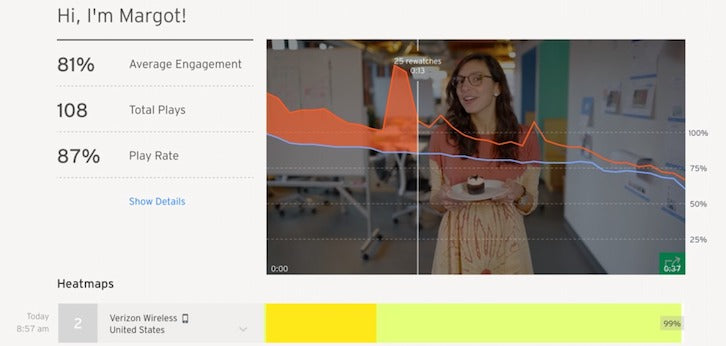Customer Delight is About Giving Little Unexpected Extras

In books, conferences, and publications everywhere, delight has historically been pitched as the cure-all tonic for your customer service woes. On top of that, delight is commonly and unfairly bucketed into two categories:
- Grand gestures that eclipse a customer’s highest expectations.
- Common courtesies such as using your customer’s name, and maybe even being nice to them.
The latter is standard fare in the modern era of customer service, and the former is rarely a cost-effective strategy. In many cases, the best experience a customer can have is not having to contact you at all.
Just like in any real, human relationship you can’t expect to get by on basic good manners or Hail Mary attempts, yet many companies view delight through those exact lenses. We need to rethink our perspective.
Holiday Toolbox: Get holiday-specific advice, tools, and feature recommendations to help you make the most of the busy shopping season. Visit the Toolbox.
The definition of delight
The cause of the disconnect can be traced back to how customer delight is defined.
Customers get to decide what’s delightful, not companies. And when you look at the available research on what drives delight, you’ll find customers have some of the most reasonable expectations around.
Consultant John Goodman has argued for years that while businesses place inordinate value on exceeding expectations through overblown interactions, customers define and reward delight on a noticeably different scale.

Maybe this has helped create the counter-narrative that delight doesn’t pay. And while only 16% of customers say they’ve been “wowed” while receiving support, perhaps that shouldn’t be the aim if delight can be achieved through other, more practical ways.
Customers get to decide what’s delightful, not companies.
After we break free from the either-or model of Herculean efforts (“Go to the customer’s house and do their laundry”) and common sense (“Don’t tell the customer they smell like a tire fire”), delight can get back to creative, cost-effective gestures that reasonably exceed expectations and provide real value.
In considering this revised definition, we have to challenge two long-held beliefs: that delight is built around singular moments of inspiration, and that delivering delight has to significantly drive up costs.
1. Delight can be repeatable
Just because delightful moments surprise your customers doesn’t mean they have to be serendipitous.
Repeatable delight is useful precisely because it increases your chances at bat. Strategically, it’s better to delight many customers a little than one customer a lot. At a certain volume scalable delighters become measurable, which gives you the chance to objectively report on their impact.
Margot da Cunha, formerly of Wistia’s customers team, tried a form of “one-to-many” delight by using a personal video in her email signature. Through tracking engagement, she found 87% of people she emailed clicked on the video and those who watched often made it all the way to the end.

Fast-forward a year, and now all of Wistia’s customer-facing team members have personalized video signatures. Their in-house video team even developed a new template to make production quick and easy.
Strategically, it’s better to delight many customers a little than one customer a lot.
Katie Morrissey, a sales representative at Wistia, notes that her video signature, which mentions a few of her hobbies and interests, has served as a great conversation starter. “Just the other day, I spoke with someone about how we both played tennis,” she says. “We also happened to have both broken our backs playing tennis. Talk about an instant connection!” 
These video signatures are a simple, thoughtful approach that work thanks to principles which broadly apply to delivering delight:
- They eschew the norm. Email signatures are fodder for comedy because they’re often .JPG-laden shrines to the ego. A video stands out precisely because expectations for signatures are low.
- They create a personal connection. Using video reminds customers there’s a real person behind the email avatar. People are nicer and more supportive of people than they are of “no-reply@yourbiz.”
- They’re an effortless interaction. Delight has a higher upside when customer investment is low. With two clicks the video opens, plays, and introduces the customer to someone from your company.
2. Delight can reduce costs
There’s a persistent belief that delight has to be a costly effort driven by values over common sense. But delight can produce measurable returns, and in some cases, can actually reduce costs through upfront investment. One example is spending more time to correctly solve a customer’s needs the first time they contact you.
According to research from Gartner, first published in The Effortless Experience, the vast majority of companies overestimate the number of issues they resolve the first time around. When Gartner polled over 100 businesses on FCR, or their First Contact Resolution rate, they reported that an average of 76% of issues were resolved on first contact. Unfortunately, customers of these same companies reported having their issues solved on first contact only 40% of the time, nearly half as often as companies believed.
Companies vastly overestimate the number of issues they resolve the first time around.
This mismatch carries a high cost in the form of lost time and dissatisfied customers. Perhaps just as important, customers don’t think in terms of touch points or tickets. They just want their sweater, in the right size, and an easy way to return the one that doesn’t fit. Customers think in outcomes.
The fix, then, is to better empathize with customers by viewing their questions as full events. Along the way to their original goal, the customer had to stop and ask for help. If you fix their current issue, where are they off to next? What will they have to do? Could you could identify that step and provide help before they ask?
This is what Nick Toman calls Next Issue Avoidance. It’s a delighter that trades time and effort for reduced contacts and an increase in customer satisfaction.

Above is an email from Warby Parker that delivers on this principle in spades. Multiple options are offered to address the next step of sending the glasses back, including pre-emptive answers to FAQs about the returns process. There’s no need to ask clarifying follow-up questions, because the next steps are already provided.
As you talk to customers, you’ll start to recognize what the most common follow-up questions are for particular problems. And if you make note of a next step that consistently forces customers to ask for help, you can identify the root cause and fix the problem as a whole.
The value of delight
The most common pushback you see around delight is that, on its own, delight rarely creates the lion’s share of the value. Products first need to live up to promises made in the marketing copy, and support should aim to minimize problems and meet expectations before it goes about exceeding them.
But just as charming product design can be used as a competitive advantage, so too does delightful service provide value not entirely evident in analytics and spreadsheets. After all, word of mouth isn’t gained through neutral experiences.
So go ahead and delight your customers, but know its rightful place in your support strategy: not as the meat and potatoes but, as Stan Phelps says, served up as the little unexpected extras.
No comments:
Post a Comment